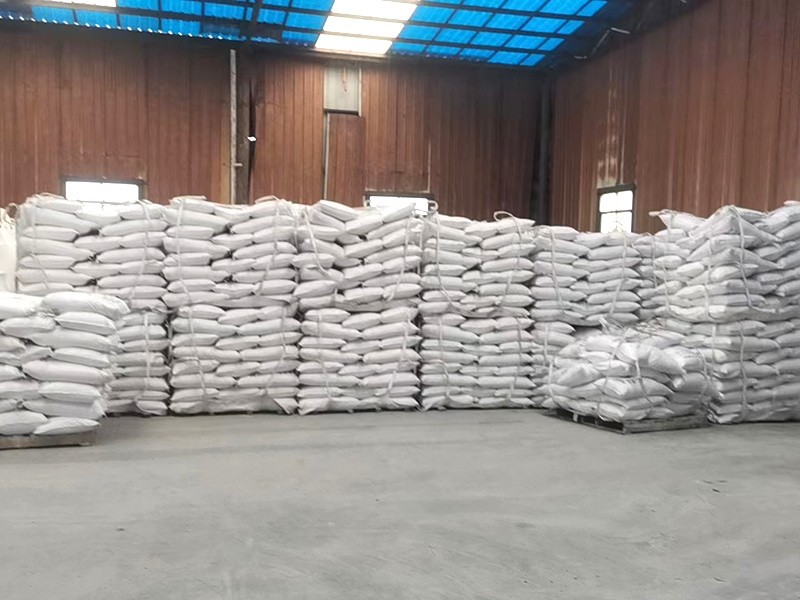Why STPP is a Game Changer for the Detergent Industry
2025-06-10
Why STPP is a Game Changer for the Detergent Industry
Table of Contents
Introduction to STPP in Detergents
What is Sodium Tripolyphosphate (STPP)?
The Importance of STPP in Detergent Formulations
Enhancing Cleaning Power with STPP
Raising Efficiency of Detergents Using STPP
Environmental Impact of STPP in Cleaning Products
Future Trends in the Detergent Industry with S

Why STPP is a Game Changer for the Detergent Industry
Table of Contents
- Introduction to STPP in Detergents
- What is Sodium Tripolyphosphate (STPP)?
- The Importance of STPP in Detergent Formulations
- Enhancing Cleaning Power with STPP
- Raising Efficiency of Detergents Using STPP
- Environmental Impact of STPP in Cleaning Products
- Future Trends in the Detergent Industry with STPP
- Frequently Asked Questions (FAQs)
- Conclusion
Introduction to STPP in Detergents
Sodium Tripolyphosphate (STPP) has emerged as a cornerstone in the formulation of modern detergents. Its unique properties not only enhance cleaning performance but also contribute to the overall quality of cleaning products. As consumers demand more effective and eco-friendly solutions, understanding the role of STPP becomes crucial. This article delves into how STPP revolutionizes the detergent industry, providing insight into its properties, benefits, and future potential.
What is Sodium Tripolyphosphate (STPP)?
Sodium Tripolyphosphate (STPP) is a chemical compound that has found extensive application in various industries, especially in detergents. It is a white, crystalline powder that acts as a powerful builder in formulations. **STPP** enhances the cleaning efficacy by softening water hardness, allowing detergents to work more effectively on stains and soils. Its formulation typically involves the reaction of phosphoric acid with sodium carbonate, making it a versatile ingredient in both consumer and industrial cleaning products.
The Chemical Composition of STPP
The chemical formula of STPP is Na5P3O10, indicating its composition of sodium (Na), phosphorus (P), and oxygen (O). This unique combination allows STPP to perform multiple functions in detergent formulations, including:
- **Sequestration of metal ions**: It binds to calcium and magnesium ions in hard water, preventing them from interfering with the cleaning process.
- **Alkalinity adjustment**: STPP can help adjust the pH levels in detergents, enhancing their overall effectiveness.
- **Stabilization of surfactants**: It helps maintain the stability of surfactants, ensuring consistent performance over time.
The Importance of STPP in Detergent Formulations
Incorporating STPP into detergent formulations offers several advantages, making it a favored choice among manufacturers.
Improved Cleaning Performance
Detergents containing STPP demonstrate superior cleaning performance compared to those without. The compound's ability to bind hard water ions means that detergents can focus their cleaning energy where it matters most—on dirt and stains.
Cost Efficiency
Using STPP can lead to cost savings in detergent production. By enhancing the effectiveness of surfactants, manufacturers can reduce the amount of active ingredients required, resulting in lower production costs and competitive pricing for consumers.
Versatility in Applications
STPP is not limited to household laundry detergents. Its versatile nature allows it to be used in:
- **Dishwashing detergents**: Enhancing grease removal.
- **Industrial cleaners**: For heavy-duty applications.
- **Personal care products**: Acting as a stabilizer in shampoos and body washes.
Enhancing Cleaning Power with STPP
One of the most significant benefits of STPP is its ability to enhance the cleaning power of detergents through multiple mechanisms.
Softening Hard Water
Hard water can significantly diminish the effectiveness of detergents. STPP effectively binds to calcium and magnesium ions, neutralizing their effects and enabling detergents to work at their full potential. This results in cleaner clothes and surfaces without the need for excessive amounts of detergent.
Boosting Surfactant Efficiency
Surfactants are the primary cleaning agents in detergents, and STPP enhances their efficiency. By stabilizing surfactants, STPP ensures that they maintain their effectiveness over time, providing consistent cleaning results even under varying conditions of water hardness.
Raising Efficiency of Detergents Using STPP
The inclusion of STPP in detergent formulations not only improves cleaning performance but also contributes to the overall efficiency of the product.
Extended Shelf Life
STPP can help extend the shelf life of detergent products by preventing the degradation of active ingredients. This stability means that detergents remain effective for longer periods, reducing waste and ensuring that consumers receive maximum value from their purchases.
Environmental Considerations
With growing concerns about environmental sustainability, STPP presents a solution. Its role in reducing the amount of detergent needed for effective cleaning means that less product is required, resulting in less packaging waste and lower emissions during production and transportation.
Environmental Impact of STPP in Cleaning Products
While STPP offers numerous benefits for cleaning efficiency and cost-effectiveness, its environmental impact must also be considered.
Biodegradability and Safety
STPP is generally considered safe for use in cleaning products. It is biodegradable and does not pose a significant risk to aquatic life when used according to guidelines. This makes it a suitable choice for environmentally conscious consumers looking for effective cleaning solutions.
Compliance with Environmental Regulations
As environmental regulations become more stringent, manufacturers who use STPP in their formulations can position themselves as leaders in sustainability. By adhering to regulations and promoting STPP’s benefits, they can attract a growing segment of eco-conscious consumers.
Future Trends in the Detergent Industry with STPP
The detergent industry is continuously evolving, and STPP is likely to play a pivotal role in shaping its future.
Innovation in Formulations
As research and development progress, manufacturers are likely to explore new applications and formulations that utilize STPP more effectively. This innovation could lead to products that are even more efficient and environmentally friendly.
Integration with Smart Technology
With the rise of smart home technology, there is potential for STPP-based detergents to be integrated into systems that optimize detergent use based on water quality and laundry load. This could enhance efficiency while maintaining cleaning performance.
Frequently Asked Questions (FAQs)
1. What is the primary function of STPP in detergents?
STPP primarily functions as a builder to soften hard water, improving the overall cleaning performance of detergents.
2. Is STPP safe for the environment?
Yes, STPP is biodegradable and generally safe when used according to recommended guidelines.
3. Can STPP be used in all types of detergents?
Yes, STPP is versatile and can be used in various types of detergents, including laundry, dishwashing, and industrial cleaners.
4. How does STPP affect the cost of detergent production?
STPP can reduce production costs by enhancing the efficiency of surfactants, which allows for lower amounts of active ingredients in formulations.
5. What are the future trends for STPP in the detergent industry?
Future trends may include innovations in formulations and potential integration with smart home technology for optimized cleaning solutions.
Conclusion
Sodium Tripolyphosphate (STPP) has proven to be a game changer for the detergent industry. Its ability to enhance cleaning performance, improve cost efficiency, and contribute to environmental sustainability positions it as an essential ingredient in modern cleaning products. As we look towards the future, the role of STPP will likely expand, paving the way for even more innovative and effective detergent solutions. By understanding and leveraging the benefits of STPP, manufacturers can not only meet consumer demands but also contribute to a more sustainable future.


 TESFA STPP
TESFA STPP